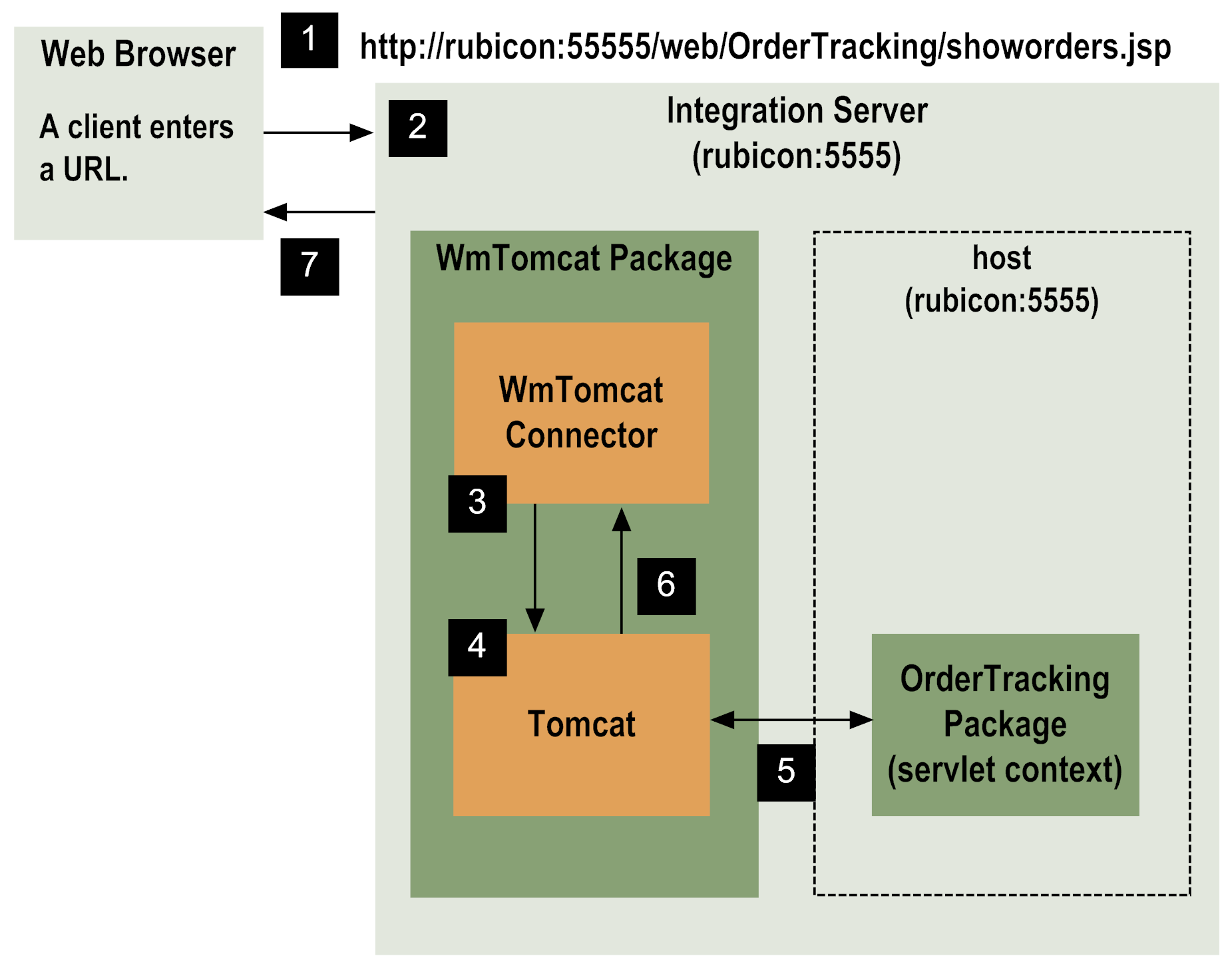
Important: | The WmTomcat package is deprecated as of Integration Server 9.10. Existing web applications based on the WmTomcat package can be migrated to webMethods Application Platform. |

Step | Description |
1 | In a browser, a user enters a URL for a web page. The HTTP request is sent to Integration Server. |
2 | Integration Server receives control. Because the URL contains the "/web" directive, Integration Server’s dispatcher forwards the request to the logic in the WmTomcat package. |
3 | The WmTomcat Connector receives control. The WmTomcat Connector is webMethods-provided logic within the WmTomcat package that connects the webMethods engine to Tomcat, which is embedded in Integration Server. The webMethods engine consists of Integration Server HTTP functionality, logging, and an engine that executes services. The WmTomcat Connector parses the URL in the format that Tomcat requires and passes control to the embedded Tomcat. |
4 | The embedded Tomcat receives control. Tomcat accesses the web application files, including JSPs and servlets, for the web page to display in the browser. To access the web application files, Tomcat uses the parsed URL that the WmTomcat Connector provides. The host name and port identified in the URL identifies the host with which Tomcat interacts to access the web application files. In a typical Tomcat implementation, there might be multiple hosts. However, for WmTomcat there is a single host (i.e., localhost). In the above example, the Integration Server host name and port number is rubicon:5555. The servlet context is a component that represents a web application. For WmTomcat, a servlet context always corresponds to exactly one Integration Server package. This package is identified in the URL (e.g., OrderTracking). Because the web application files are stored in the Integration Server file system, the Tomcat Engine can access the files from the Integration Server_directory \instances\instance_name\packages\packageName\web directory of a package. In the above example, the web application files reside in the Integration Server_directory \instances\instance_name\packages\OrderTracking\web directory. |
5 | Control passes to the servlet context by way of the corresponding Integration Server package. The web application (e.g., showorders.jsp) that was specified in the original URL from the browser is invoked. |
6 | After the final web page is built and displayed in the browser, control is returned to Tomcat, which in turn returns the web page to the WmTomcat Connector. |
7 | The WmTomcat Connector returns the HTTP response to the HTTP functionality within Integration Server. Integration Server responds to the original HTTP requests with the response (i.e., the web page to display at the browser.) |